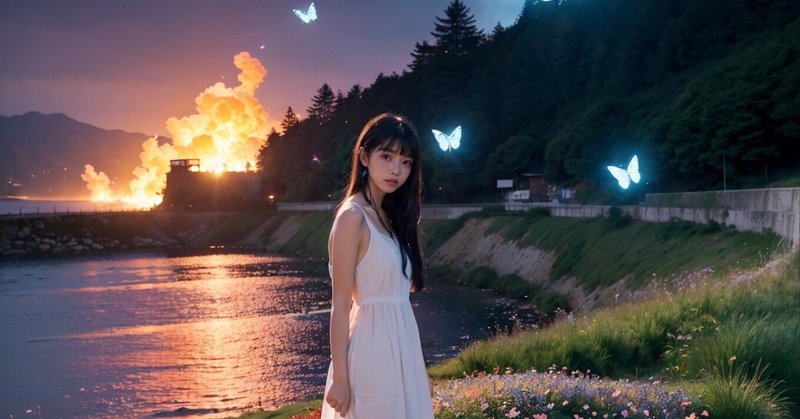
Stable Diffusion 夢の機械(画像生成AI)について-24
About Stable Diffusion Dream Machine (Image Generation AI)-24
戦争関連の或る種の図像をstable diffusionで呼び出すのは一体、悪なのだろうか。平安貴族の十二単は唯のデータ不足なのかもしれない。AIで出力が禁じられる画像とはどのようなものだろうか。
日本語変換ソフトで差別語などとして存在を否定され、変換されない単語、言葉狩りの対象である単語たちと同じ問題のようだった。
一方が言葉狩りであれば、一方は画像狩りというところだろうか。
日本語変換では「差別語変換辞書」というものが有志によって作られているように、stable diffusionのAIモデルに足りない、もしくは禁じられた図像は自身でデータを作成するか、もしくは有志によって作成されたloraと呼ばれるような画像プラグインを探すしかなさそうだった。
だが、わざわざそこまでして禁じられた図像を召喚することに私も特にこだわりはなかった。
禁止された決まりを破ることに特別、快楽を感じる訳でもなかった。技術的な手間を考えれば、必要最低限なもので、納得できるものを出力できればそれで良かった。
しかし、今後、よりAIでの画像生成が一般的になれば、そのときAIモデルデータ内に存在しない図像は当然出力できない訳で、「着物」という言葉で中国風の着物が画像として出てくるのか、韓国風の物なのか、そこで「日本の着物」と限定しても、やはり(現時点のように)中華風の着物が出てくるのであれば、表したい和風の景色が「ハリウッド映画製日本」のようにどこか大味で、大雑把なものになりそうだ。

Is it evil to call up certain war-related images with stable diffusion? What kind of images are forbidden to be output by AI?
It seems to be the same problem as that of words that are not converted by Japanese conversion software because their existence is denied as racist words, or words that are the target of word-hunting.
If one is word-hunting, the other is image-hunting.
As a "discriminatory word conversion dictionary" has been created by volunteers for Japanese language conversion, it seemed that the only way to get images that are missing from the AI model of stable diffusion or forbidden was to create their own data or find an image plug-in called "lora" created by volunteers. However, it seemed that it would be difficult to go to such lengths and find a forbidden image.
However, I was not particularly concerned about going to such lengths to summon forbidden images.
Nor did I feel any particular pleasure in breaking a prohibited rule. Considering the technical effort involved, I was happy as long as I could output something satisfactory with the minimum necessary.
However, if AI image generation becomes more common in the future, images that do not exist in the AI model data will naturally not be output. At that time, will the word "kimono" produce images of Chinese-style kimonos or Korean-style kimonos? Even if we limit the term to "Japanese kimono," if Chinese-style kimonos still appear (as they do at present), the Japanese-style scenery we want to represent will likely be somewhat rough and sketchy, like "Japanese scenery created by Hollywood movies".
この記事が気に入ったらサポートをしてみませんか?
